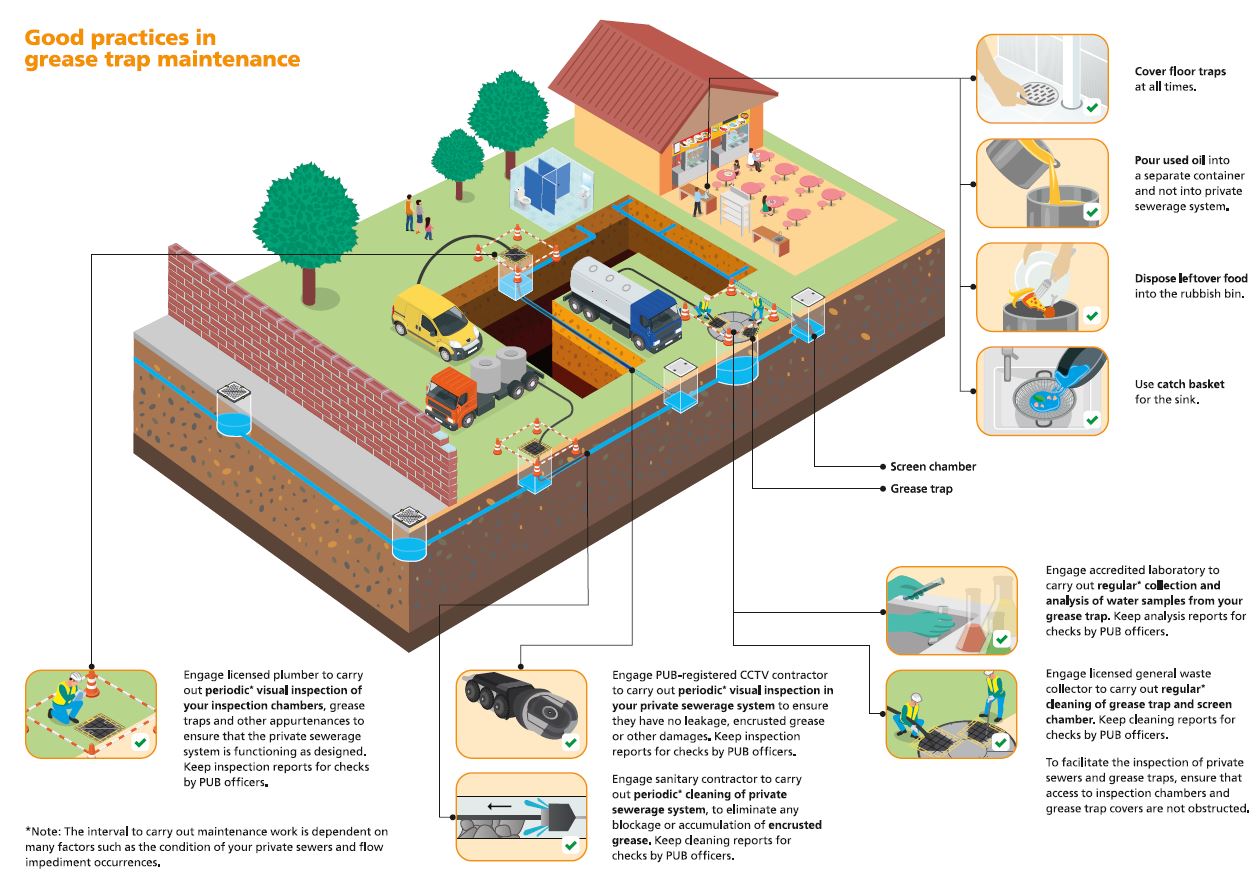Maintaining your grease trap properly can help prevent:
a) Offensive odours
b) Flow blockage due to accumulation of oil and grease in the sewerage system
c) Overflow of used water from blocked sewers onto your premise or other public areas
Besides giving your patrons a pleasant eating environment, the measures that you put in place will also help to protect our precious water resources and address public health concerns.
Food establishments may refer to the following recommended frequencies for maintenance. The interval to carry out maintenance work is dependent on many factors such as the condition of your private sewerage system, and you may need to increase the maintenance frequencies accordingly to site-specific conditions
| 1 | Cleaning maintenance of grease traps | Licensed General Waste Collector | At least once every 2 weeks(to increase if culinary water contains a higher Fats, Oil, and Grease loading.) |
| 2 | Cleaning/flushing of private sewerage system to eliminate any blockage or accumulation of encrusted grease. | Sanitary contractor | At least once every 6 months |
| 3 | CCTV inspection of private sewerage system for any leakage, encrusted grease, or damages. | PUB-registered CCTV contractor | At least once every 5 years |
| 4 | Visual inspection of inspection chambers, grease traps, and other appurtenances | Licensed plumber | At least once every 5 years |

Click on picture to enlarge
